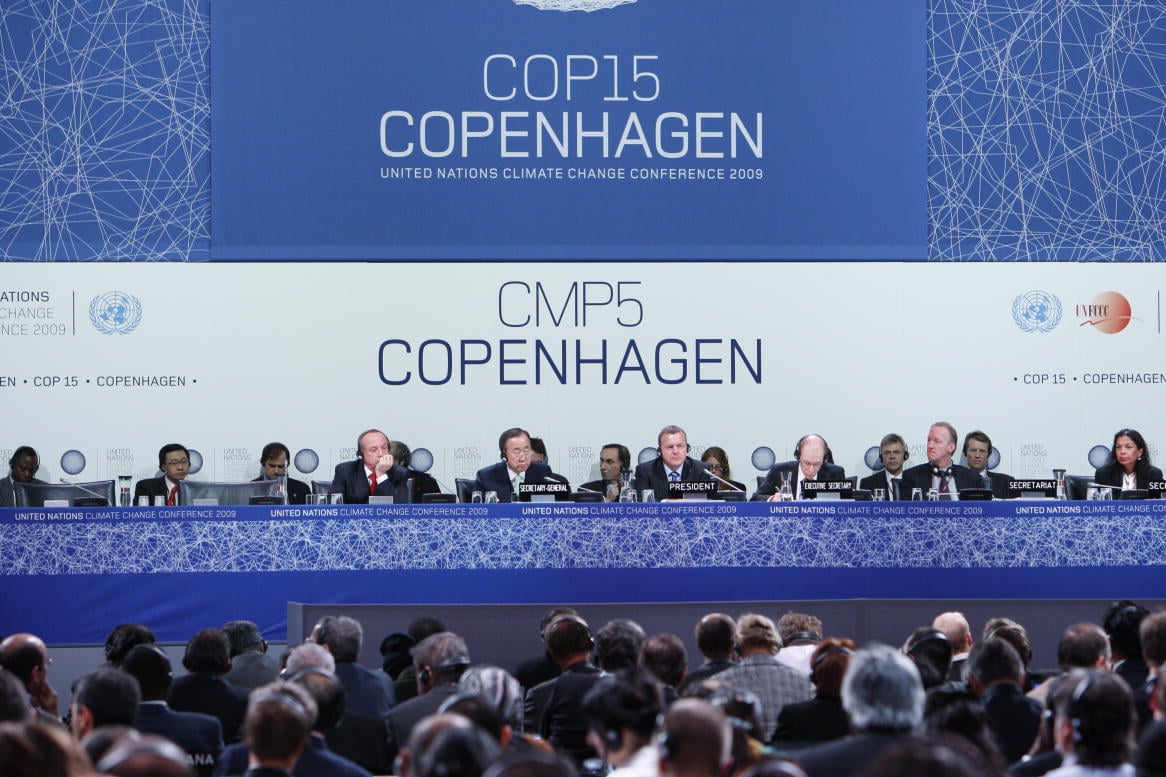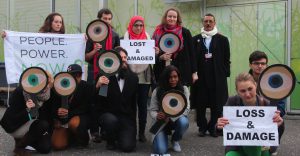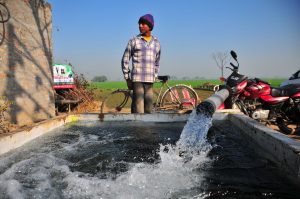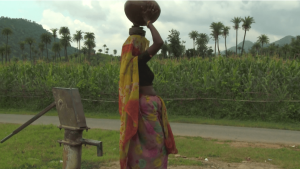Scientists have known about climate change since 1896, when Svante Arrhenius published his findings on the effect of fossil fuel combustion on global temperature. But it was 1972 before policymakers actually started discussing the problem, at the United Nations Conference on the Human Environment, popularly known as the Stockholm Summit.
Apart from the host, only one prime minister attended that summit – Indira Gandhi of India – a far cry from the situation now. At least 37 heads of state and government are expected to inaugurate the Paris summit of the United Nations Framework Convention on Climate Change (UNFCCC).
See also: What a Paris climate deal won’t cover
Faultlines
From the very beginning of climate negotiations, four faultlines emerged between countries
– Greenhouse gas emissions were causing global warming, so these emissions would have to be controlled. But which country would control how much, and why? What the negotiators called the “burden sharing mechanism” was the first faultline, and remains the principal source of discord.
– Major oil producers – led by the Organisation of Petroleum Exporting Countries (OPEC) – feared the economic consequences of emissions limitations. For years, they tried their best to rubbish climate science.
– Countries relatively resilient to climate change impacts – mostly in the temperate regions and at even higher latitudes – were not nearly as worried by the thought of global warming as tropical region countries that are extremely vulnerable.
– Climate change sceptics and deniers opened up the fourth faultline by repeatedly questioning the science and succeeded in delaying action to tackle the problem.
Climate negotiations – the phases
The UNFCCC came into being as one of the results of the 1992 Earth Summit in Rio de Janeiro. Since then, there have been distinct phases in negotiations held under its aegis.
– The Kyoto Protocol in 1997. During this phase, the focus was on designing a workable agreement that would help address rising greenhouse gas emissions and also provide developing countries necessary support through finance and technologies so that they could tackle the problem through voluntary actions. The signing of the Kyoto Protocol made it mandatory for rich nations to reduce their emissions and was hailed as a major triumph.
But, in hindsight, it can at best be called a very partial success. The major problem was the non-ratification of the protocol by the United States of America. The EU was at the forefront of those rich countries that did work according to the Kyoto Protocol, but their emission reductions were inadequate to check global warming to the extent that the scientists recommended.
– ‘Post-Kyoto’ 1997 to 2007. Much of this decade was spent in negotiating the details of the Kyoto Protocol, whose first phase was finally determined to be 2008 to 2012. Climate science advanced manifold in this decade, and scientists ratcheted up their warnings, but developing countries failed to initiate effective pressure for more actions from developed countries.
Instead, developing countries split into smaller blocs such as the Association of Small Island States and the Africa Group, which had an adverse effect on their collective bargaining power. The second phase came to an end with a dire warning from the Intergovernmental Panel on Climate Change (IPCC) in its fourth assessment report, despite which the next UNFCCC summit at Bali saw a series of compromises on different red-lines of the developing world, while developed counties were successful in ensuring minimum actions on their part.
– The chaos of Copenhagen and the aftermath. From the fiasco of the Copenhagen summit, this phase is being marked by a split between the emerging economies and the rest of the developing world. The split has been encouraged by the US and some other rich countries, which point out that China and India are now the world’s largest and fourth largest emitters, but gloss over the fact that rich countries have placed almost all the greenhouse gases that have been accumulating in the earth’s atmosphere from the start of the Industrial Age.
Per capita emissions in China are one-third of that in the US and one-tenth of India’s. The split has enabled rich countries led by the US to effectively dismantle the original UNFCCC pillar of differentiation between rich and poor nations. Now – except on paper – there is no top-down legal global emission reduction target to be allocated to rich nations. Instead, there are voluntary bottom-up Intended Nationally Determined Contributions (INDC) by every country.
At the 2010 Cancun summit, countries had agreed to keep average global temperature rise within 2C. Current INDCs will fail to do that. Analysts estimate that at best they can hold average temperature rise to 2.7C. And that is the best that can be expected from a Paris agreement for a post-2020 world.
Changes in how countries negotiate in blocs, as well as new bilateral relations between various developing and developed countries (such as the US and China), have moved the climate change control system from a top-down approach like the Kyoto Protocol to one where individual countries make voluntary pledges submitted to the UN as INDCs.
This leads to worries on two counts. First, as shown by the latest report of the IPCC, climate change and its impacts are all gathering pace, but the INDCs are not good enough to rein in the trend. Second, in a voluntary system a country that fails to live up to its pledge does not have to worry about any action by the international community. Some countries are still trying to subject these pledges to an international review system, but that is being opposed by others that see this as a dilution of their sovereignty. Some sort of a review system is likely to be put in place in the Paris deal, but it will probably be weak.
The other big trend is that it is no longer a binary climate world, split between developed and developing countries. Despite strenuous efforts by their negotiators, emerging economies, such as China and India, now have to take a substantial share of the emission control responsibility.
As it stands now, emission control pledges from developing countries are actually bigger than pledges by developed countries, a situation that some feel flies in the face of climate justice. On top of that, there are serious question marks about the kind of financial support rich countries are providing and whether there is any double counting going on. A recent report by the Organisation for Economic Co-operation and Development said commitments of climate finance support from member countries was over US$62 billion, but developing countries point out that the UN’s Green Climate Fund has only US$10.3 billion in pledges.
It all points to one trend that has remained unchanged since 1896 – policymakers do not pay sufficient attention to scientists. Apart from IPCC, the annual ‘emissions gap’ reports brought out by the United Nations Environment Programme have failed to spur decisive political action.
The annual climate summits of the UNFCCC are officially known as Conference of Parties (COP). The 2015 COP is crucial because it can determine the direction to be taken by global energy generation systems after 2020. But by current indications, the outcome will be too weak to combat climate change effectively.








